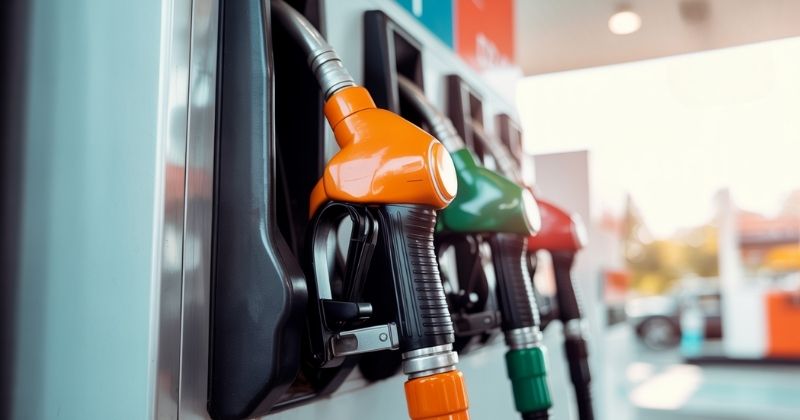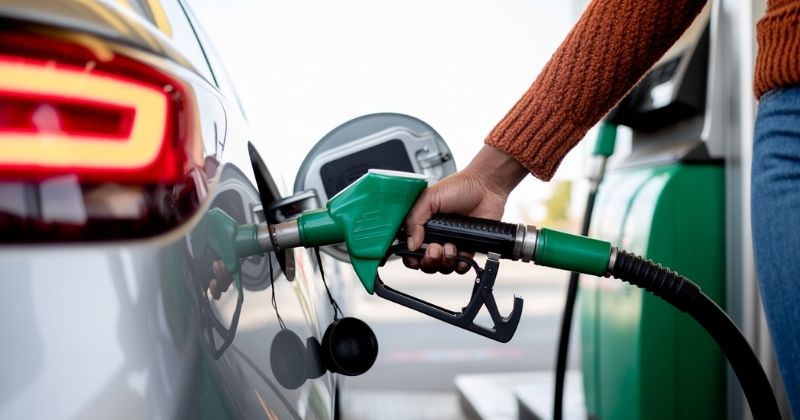
According to the latest month-end figures released by the Central Energy Fund (CEF), motorists in South Africa can expect a more substantial reduction in petrol prices in the upcoming adjustment cycle. The data shows that the over-recovery has grown towards the end of July, suggesting that the planned cut in petrol prices may be even greater than previously anticipated. This offers some relief to consumers who have been burdened by rising living costs and transport expenses for months on end.
Key Takeaways
- Petrol Price Relief vs Diesel Pain: Motorists in South Africa can expect a petrol price cut of up to 35 cents per litre in August due to a strong over-recovery, while diesel users face hikes of up to 65 cents per litre, driven by ongoing supply constraints and global market pressures.
- Global and Political Turbulence Adds Pressure: Rising oil prices, renewed tensions linked to Trump-era tariffs, and uncertainty around South Africa’s trade future with the US are creating volatility in fuel forecasts, inflation expectations, and the value of the rand.
- Rand Faces Dual Threats: Although the rand held below R18.00 for most of July, it weakened in the final week due to tariff concerns and upcoming SARB interest rate decisions. The currency’s trajectory will depend heavily on the Reserve Bank’s move and the outcome of US trade policies.
About Arcadia Finance
Get the funds you need without the hassle. With Arcadia Finance, there are no application fees, and you can choose from 19 trusted lenders registered with South Africa’s National Credit Regulator. Fast, secure, and tailored to you.
Diesel Users Face Less Favourable Outlook Despite Stabilisation
On the other hand, the situation for diesel users is less encouraging. The CEF’s report confirms that a notable increase in diesel prices remains likely. Although the under-recovery has shown signs of stabilising at a slightly lower level than earlier in the month, it remains in negative territory, pointing to a confirmed upward price adjustment for diesel.
This will hit logistics companies, public transport operators, and agriculture particularly hard, as diesel remains a cornerstone input in these sectors.

Projected Fuel Price Adjustments for August
The CEF’s data for the end of July indicates that motorists are facing a mixed bag of fuel price movements. Petrol users can look forward to a decrease of around 30 cents per litre, while diesel users are expected to pay more, with a potential increase of approximately 63 cents per litre. These provisional figures are subject to final confirmation by the Department of Mineral Resources and Energy, which will officially announce the changes before they are implemented in the first week of August. However, with only a few days remaining in July, the recovery balances are unlikely to shift significantly or reverse direction. This means South Africans can plan their transport budgets with a fair degree of certainty going into August.
Detailed Fuel Price Movements as of Month-End
Here is a breakdown of the over- and under-recoveries recorded at the close of July:
| Fuel Type | Price Movement (cents per litre) |
|---|---|
| Petrol 93 | Decrease of 35 |
| Petrol 95 | Decrease of 30 |
| Diesel 0.05% (wholesale) | Increase of 65 |
| Diesel 0.005% (wholesale) | Increase of 63 |
| Illuminating paraffin | Increase of 29 |
These shifts reflect the continued volatility in global markets, where geopolitical tension and economic speculation are disrupting normal pricing behaviour.
Petrol Over-Recovery Strengthens Throughout July
The positive development for petrol consumers is that the over-recovery figure has remained consistently above the neutral level throughout July and even improved during the final week. This trend supports expectations of a more generous reduction in petrol prices for August. The month began with the over-recovery hovering in the mid-to-high teens in cents per litre. As global oil prices dipped and the South African rand displayed resilience, the over-recovery nearly doubled, offering greater pricing relief for motorists. This provides much-needed breathing room for consumers heading into the high-expense back-to-school and winter utility season.
Global Market Forces Drive Divergence in Petrol and Diesel Trends
Petrol and diesel prices have shown divergent trends since June, influenced by contrasting developments in global oil markets. Ongoing market volatility driven by conflict in the Middle East has had uneven impacts on different fuel types. Diesel, in particular, has faced supply constraints that have contributed to stronger upward pressure on wholesale prices.
Traders have pointed to regional refinery shutdowns and increased European demand as compounding factors pushing diesel prices out of sync with petrol.
As July comes to an end, the overall picture for South African fuel prices remains mixed. International oil prices and the local currency have both weakened in ways that may negatively affect fuel costs. Nonetheless, with only a few trading days left in the month, the figures currently being reported are likely to remain broadly representative of what consumers will face in August. It now becomes a question of how long the rand can hold off further depreciation under mounting external pressure.

Crude Oil Rises Amid Tensions Over Trump’s Pressure on Russia
Global oil prices have recently climbed back above the 70 US dollar per barrel mark. This rebound was partially driven by geopolitical developments, including former US President Donald Trump’s call for Russia to agree to a swift truce with Ukraine. The warning of economic penalties should Russia fail to comply has sparked concerns about possible disruptions to oil production from OPEC+ member countries.
Any further escalation in the Russia–Ukraine conflict or renewed US sanctions could choke crude supply chains, creating fresh pricing pressure across global markets.
Tariff Threats and Supply Concerns Add to Market Uncertainty
In addition to the geopolitical situation, markets are closely watching the proposed reintroduction of Trump’s so-called “Liberation Day” tariffs, expected to come into force on Friday, 1 August. This policy move has the potential to again unsettle the global balance of oil supply and demand. Although markets would usually respond more sharply to such developments, there is growing scepticism about whether the Trump administration will ultimately follow through with these measures. Investors remain cautious but are pricing in potential ripple effects on import-heavy economies like South Africa, particularly in the vehicle manufacturing and agriculture sectors.
Tariffs Raise Questions Over Strategic Coherence
Some analysts have pointed out that Trump’s goal of keeping oil prices low appears inconsistent with the potential consequences of imposing new tariffs. If implemented, these policies could constrain supply, thereby increasing prices, which would contradict the stated objective. However, the administration has made no indication of reconsidering the decision, and markets have already begun pricing in the impact of a 30 percent tariff on South African exports from the first day of August. This has sent shockwaves through the local automotive and agro-processing industries, which rely heavily on US demand.
Resilient Rand Faces Renewed Pressure from Interest Rate and Tariff Risks
Despite these headwinds, the rand has shown unexpected strength against the US dollar over recent weeks, remaining well below the R18.00 mark for much of July. This relative firmness has played a key role in supporting the over-recovery in fuel pricing, contributing to a more favourable petrol price adjustment and dampening the extent of diesel price increases. Nevertheless, in the final week of the month, the rand has started to weaken, recently trading around R17.93 to the dollar. The weakening reflects rising anxiety among investors as political and monetary risks begin to coalesce.
Tariff Concerns and Monetary Policy Weigh on Local Currency
The decline in the rand’s strength is being attributed to heightened global market uncertainty surrounding the proposed “Liberation Day” tariffs, as well as anticipation of the upcoming interest rate decision by the South African Reserve Bank. These combined pressures are generating negative sentiment towards the rand. Analysts have described the current market environment as a ‘perfect storm’ for emerging market currencies.
Economic Impact of US Tariffs Likely to Hurt South African Exports and Jobs
According to Investec Chief Economist Annabel Bishop, the imposition of tariffs by the United States would be clearly detrimental to South Africa’s economic interests and the performance of the rand. In particular, South Africa’s competitiveness in key export sectors such as motor vehicles and food products would be undermined, leading to a potential decline in export volumes. This, in turn, could negatively affect employment, economic growth, and investor sentiment.
Government officials have been lobbying behind the scenes to soften the blow, but a concrete exemption deal has yet to materialise.

Exchange Rate Outlook Hinges on Trade Deal Outcomes
Bishop warned that failure to secure a trade agreement that limits tariffs to around 15 percent could have a significant negative effect on the domestic currency. She also stated that the US tariff decision would be a major factor influencing the rand’s performance in the third quarter of the year. The current forecast suggests the rand could average around R18.00 to the dollar during this period. That figure, if sustained, could feed into inflation and delay broader economic recovery efforts.
Interest Rate Decision Adds to Market Sensitivity
While tariffs dominate the trade narrative, the South African Reserve Bank’s Monetary Policy Committee is also scheduled to deliver its next interest rate decision on Thursday, 31 July. Economists remain divided over whether the committee will opt for a 25-basis-point cut or choose to hold the rate steady. Given the current volatility in the exchange rate, markets appear to be pricing in the possibility of a modest rate cut.
Any cut, however, would have to be balanced against the risk of further weakening the rand and importing inflation.
Bishop also highlighted that the United States has not made any interest rate cuts in 2025 so far, whereas South Africa has already implemented two cuts this year, each by 25 basis points, in January and May respectively. This narrowing gap between local and US interest rates has lessened the appeal of South African assets for foreign investors, exerting additional downward pressure on the rand. The diminishing differential in returns has already triggered some capital outflows from local bonds and equities.
Limited Room for Rate Cuts Despite Inflation Cushion
Although there is theoretically space for the Reserve Bank to reduce rates further by up to 100 basis points, given that the neutral interest rate remains about 2 percentage points above expected inflation, the broader market environment may not support such moves. With consumer inflation projected to hover around 4 percent for most of the inflation targeting period, the Reserve Bank has some flexibility. However, given the present pressure on the rand and the uncertain global backdrop, it is more likely that the Monetary Policy Committee will opt for only one more 25-basis-point cut, either in July or during the next scheduled decision in September. The decision will be watched closely by businesses and households alike, as it could signal the SARB’s overall strategy for the remainder of the year.
Relief at the pumps may not last. See Petrol Price Relief in South Africa Comes with a Major Downside for why global risks could reverse the gains.

Conclusion
South Africans are caught between conflicting forces as August approaches. While the petrol price cut offers welcome relief for commuters and households under pressure, diesel hikes and economic uncertainty dampen the good news. International developments, especially US tariff threats and the volatile oil market, are directly influencing local fuel pricing and the rand’s performance. With the Reserve Bank’s upcoming rate decision also in focus, the coming weeks will be crucial in determining whether relief at the pump is sustainable or short-lived.
Fast, uncomplicated, and trustworthy loan comparisons
At Arcadia Finance, you can compare loan offers from multiple lenders with no obligation and free of charge. Get a clear overview of your options and choose the best deal for you.
Fill out our form today to easily compare interest rates from 19 banks and find the right loan for you.


